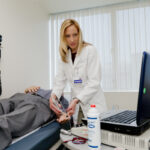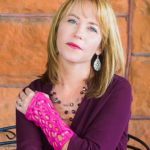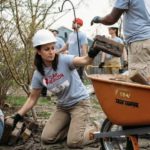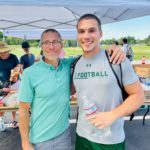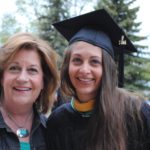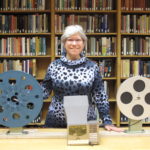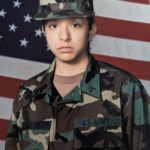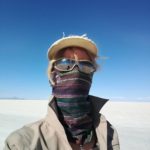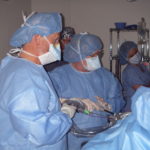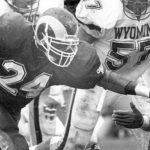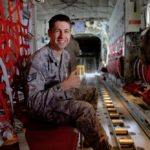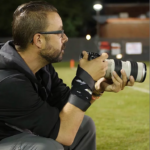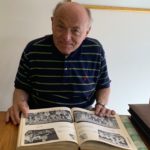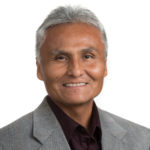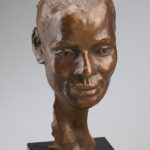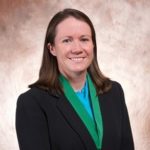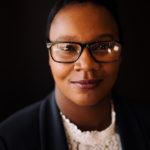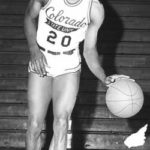
Being a Neurologist is not unlike being a detective. The symptoms are clues that must be followed closely in order to find the perpetrator, or disease. That’s the way Dr. Kerry Knievel (B.S., ’01; M.S., ’02) approaches her work as the director of the Lewis Headache Center at Barrow Neurological Institute in Arizona where she works to not only alleviate headaches and other neurological diseases for her patients, but is also involved in research seeking better treatments and potentially cures for some.
“It’s interesting, intriguing, and rewarding work, and [headaches] are way more complex than people imagine,” she said. “I love the mystery and the hunt of it all – really interviewing the patient with very detailed questions, obtaining imaging and other testing, collaborating with colleagues, and reviewing literature to find answers for patients who are suffering. I’ve been practicing for 12 years and I’m constantly seeing something new.”
The interest in the brain, its function, and ailments began for Dr. Knievel during an anatomy class at Fort Collins High School. Even before graduating, she took every AP class she could that was connected to medicine and, when it came time to choose a university, she knew Colorado State University would be the best place to begin her journey. It was a great experience and even though she kept feeling the neurology pull, she wanted to see what other opportunities were out there. After completing her undergraduate degree, she took a summer job with UC Health in Denver doing nutritional and diabetes lab research.
“Lab research wasn’t right for me and I realized I wanted to do the anatomy and neurobiology master’s program at CSU, but it was late summer, and the applications had been due months ago. I contacted a mentor of mine, Professor Mark Frasier, and many other students, and asked if I could perhaps take a couple of graduate classes. I remain in disbelief to this day that he actually created an additional position in the master’s program for me just days before classes started,” Dr. Knievel said.
Participating in the anatomy and neurobiology program, she added, gave Dr. Knievel a huge foundation and made her stand out when she began applying to med school, especially neurology residency. After earning her doctorate from Kirksville College of Osteopathic medicine in Missouri, Dr. Knievel began her residency at the Barrow Neurological Institute, where she has worked ever since.

“When I finished my residency, and then my fellowship in neuromuscular diseases at Barrow, I joined the faculty and wanted to start a headache program,” she said. “Barrow is a huge neurological institute with more than 50 neurologists. Headaches are the number one reason why people see a neurologist and 46 million people in the U.S. have migraines, but at the time Barrow didn’t have a headache program with specialists to diagnose and treat migraines and other headache disorders.”
Dr. Knievel developed that specialty at Barrow from the ground up, building upon the expertise of her mentors and other headache programs, such as Stanford University and the Mayo Clinic, which is also located in Arizona. Headaches, specifically migraines, Dr. Knievel explained, affect about 15% percent of the population but are still widely under diagnosed and under treated. Headaches can also be a warning sign of something dangerous, such as aneurysm, tumor, or infection, so making the proper diagnosis is paramount.”
Seeing the look on her patient’s faces as they realize Dr. Knievel is actually listening, truly hearing them, and is doing everything she can to get to the root cause of the pain, is a great first moment of feeling rewarded by the work. The second, even more important instance, is when she can actually cure the headache or migraine.
“In many instances, it can be the first time they’re being listened to after years of pain and multiple physicians,” she said. “Our approach is with preventive and rescue treatment, but the first, most important part, is getting the proper diagnosis, which requires time, thought, and diligence.”
Diagnosing the issue is also the most challenging because many different issues can cause a headache. Dr. Knievel cited one patient in particular as an example.
One morning, the patient, who was pursuing a Ph.D. program woke up with a terrible headache that was accompanied by severe nausea and light sensitivity (common features of a migraine). After her symptoms persisted, she spent the next two years visiting physicians, getting MRIs, a spinal tap, and numerous other treatments. Eventually, she had to drop out of the graduate program and return home to live with her parents because the pain refused to go away. Even the patient’s family thought homesickness or depression were the root cause of her symptoms.
“When I finally saw her, she told me the headache began suddenly and out of the blue and had never gone away. She experienced pain 24-hours a day. I asked her more questions, getting more detailed, until I asked her if the pain wakes her up,” Dr. Knievel said.
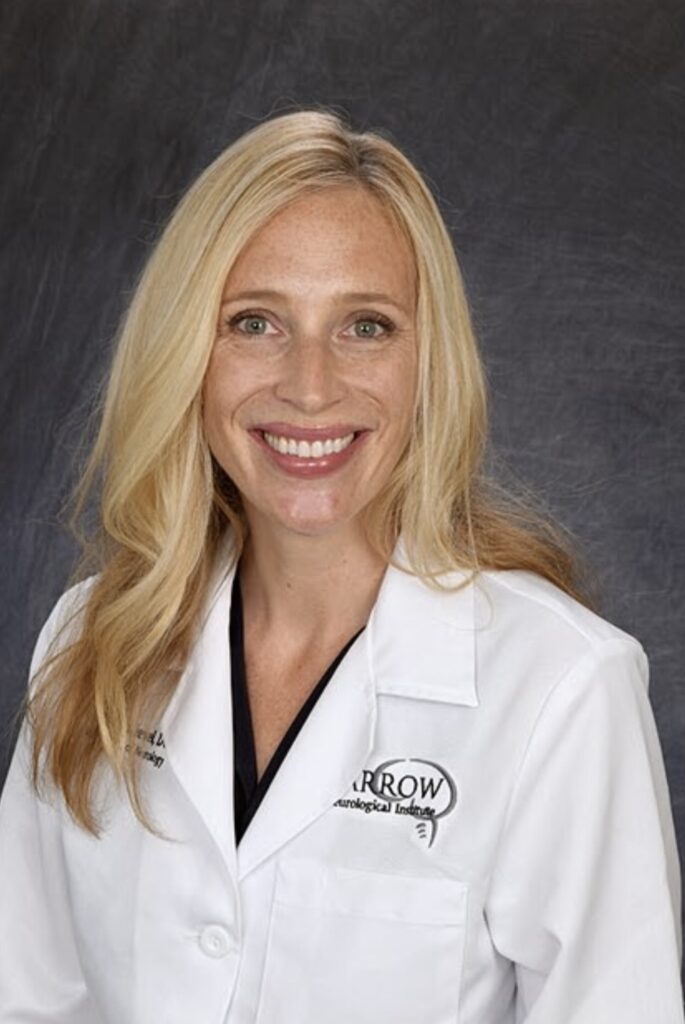
The patient said no, the pain didn’t wake her up from her sleep. With her detective skills running full steam, Dr. Knievel asked the patient to lie flat on her back. The pain disappeared within 10 minutes. She then asked the patient to sit up. When she did, the pain returned. Dr. Knievel kept following that clue and ordered a more detailed MRI.
“We found that she had a spontaneous spinal fluid leak – a cyst along her spine that was leaking,” Dr. Knievel explained. “She had surgery to seal the leaking cyst and now, her headaches are gone, and she will soon be returning to her Ph.D. program.”
That is only one example of the many patients Dr. Knievel has been able to help, but it encapsulates her approach, philosophy, and the reason why she loves what she does.
“It’s so rewarding to give the proper diagnosis and treatments and then use that information to give our patients their lives back” she said.
That’s not all Dr. Knievel gives back. As someone who benefitted from many mentors and role models, Dr. Knievel is working to do the same for future physicians. One of her greatest joys is coming back to the CSU campus for College of Veterinary and Biomedical Sciences career nights where she can help guide students on their own medical career journeys. She’s also endowed a scholarship in Professor Mark Frasier’s name (the person who put his faith in her all those years ago) and is a strong proponent of the Barrow Institute’s summer undergraduate program, which invites undergraduate students with an interest in neurosciences to conduct a 12-week paid internship at the institute.
“I want to help the future of neuroscience, and that means giving back. I had some amazing opportunities starting at CSU and that has been unbelievably helpful in my journey to becoming a neurologist,” she said. “You never forget those people who you shadow or who mentor you, and I want to do the same. Whatever I can do to pay it forward and help students find their right path.”


